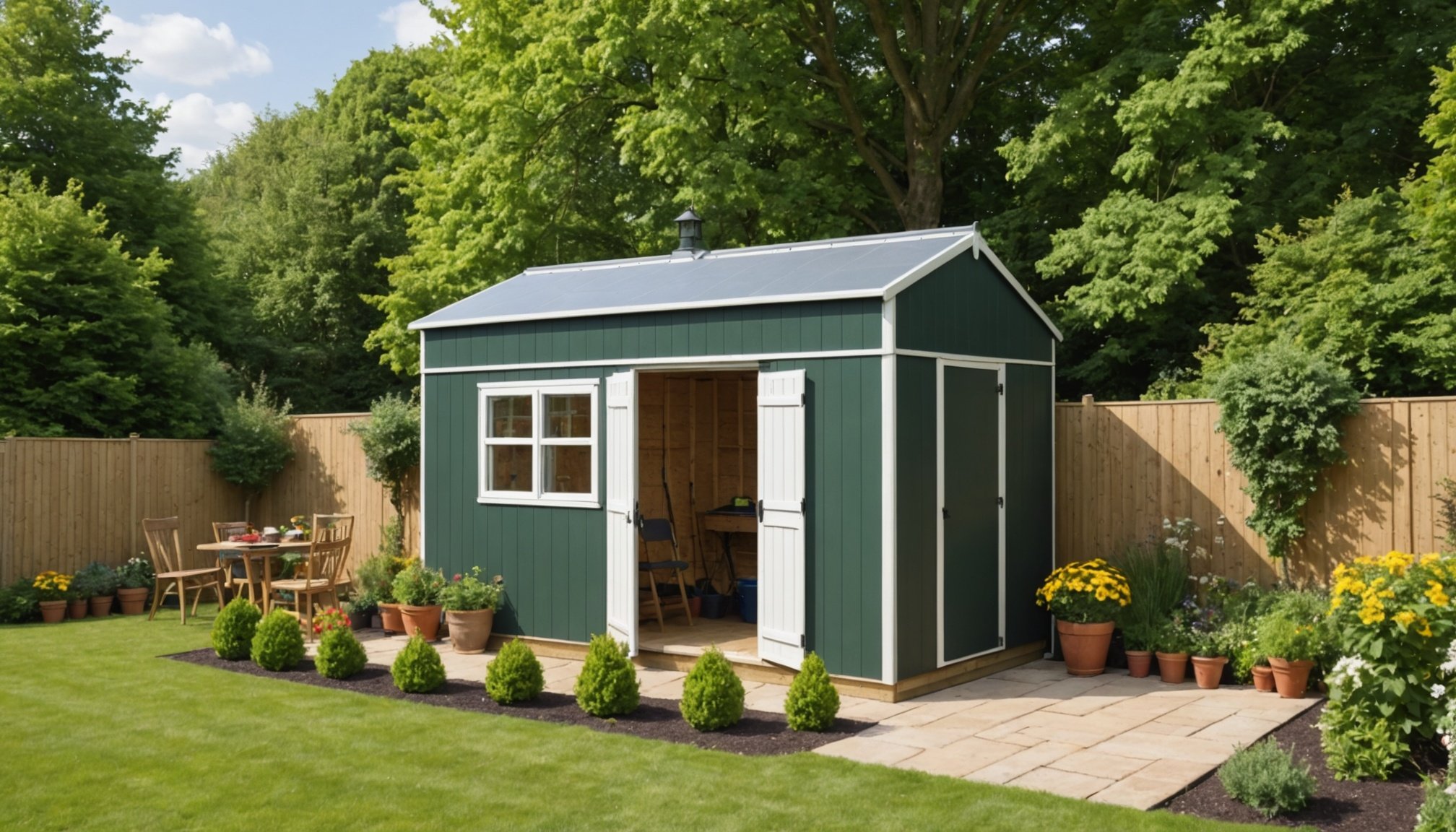Understanding the Importance of Shed Insulation
Insulating a shed offers numerous benefits that enhance both efficiency and comfort, while also promoting energy saving. Effective insulation leads to increased shed efficiency by reducing heat loss during colder months and minimizing heat gain in the summer. This regulated temperature not only makes the shed more comfortable but also optimises its utility for year-round use. Insulation’s role in prolonging the life of a shed is significant; it protects against moisture accumulation which can lead to mould and rot.
When a shed is well-insulated, the interior remains dry, thereby safeguarding stored items and extending the longevity of the structural materials. It’s important to note that insulation importance extends beyond mere temperature regulation. It also contributes economically by lowering energy costs, thus providing energy saving benefits over time. For anyone looking to make their shed more efficient, investing in quality insulation is a practical step toward achieving greater functionality and enhanced comfort. Understanding the importance of shed insulation helps homeowners make informed choices that pay off in terms of energy efficiency and longevity.
Also read : Ultimate Guide to Transforming Kitchen Waste into Nutrient-Rich Garden Compost in the UK
Budget-Friendly Insulation Materials
When it comes to insulating your shed on a budget, there are several cost-effective options available. Fiberglass is a popular choice due to its affordability and decent thermal performance. It offers a reliable solution for maintaining your shed’s temperature. Foam boards are another affordable option. Known for their easy handling, they effectively fill gaps while providing significant insulation value.
Understanding the importance of R-values is vital when considering budget-friendly insulation. R-value measures thermal resistance, and higher values mean better insulation. Among budget options, foam boards typically offer higher R-values compared to fiberglass, providing more efficient insulation.
In the same genre : Fridge cleaning secrets: a smart home improvement guide
Local UK suppliers provide a range of budget-friendly materials, making it easier to source what you need without excessive shipping costs. Some suppliers offer bulk discounts or promotions which can further reduce costs. With a focus on DIY solutions, many homeowners find that they can achieve effective insulation without professional help, keeping costs low. Investing wisely in these materials and understanding their properties ensures your shed remains efficient and well-insulated.
Step-by-Step Installation Guide
Insulating your shed yourself can be a rewarding endeavour. Understanding the installation process is crucial. First, gather all essential tools and materials. These typically include a tape measure, utility knife, staple gun, and insulation panels.
Preparing Your Shed for Insulation
Begin by clearing your shed of belongings to ensure unimpeded access to walls and ceiling. It’s necessary to fill any existing holes or cracks to prevent future insulation issues. Proper preparation sets the foundation for efficient DIY insulation.
Installing Insulation Panels
Next, obtain precise measurements. Measure the walls and ceiling to cut your insulation panels accordingly. Use a utility knife for precision. Once prepared, secure the panels using a staple gun, ensuring an even finish. This step is integral for achieving optimal thermal performance.
Sealing and Finishing Touches
Sealing the gaps between insulation panels is essential to prevent energy loss, emphasising the importance of sealing gaps. Use expanding foam or caulk for airtight seals. Install vapour barriers to control moisture and maintain ventilation. These final touches enhance insulation efficiency and protect against UK weather elements.
Considering UK Weather Conditions
The UK weather presents unique challenges for shed insulation due to its diverse and often unpredictable climate. Frequent rain, high humidity, and fluctuating temperatures necessitate weatherproofing strategies to maintain effective insulation. One primary concern is managing moisture levels to prevent condensation and potential damage to both the structure and stored items.
Strategies for Weatherproofing
Protecting against moisture involves installing vapour barriers alongside insulation. These barriers serve as a crucial defence against dampness, preserving the shed’s integrity. Seasonable temperature variations also highlight the importance of choosing adaptable insulation materials that perform well in both heat and cold.
Seasonal Considerations
During colder months, ensuring that your insulation provides adequate thermal resistance is essential. Opt for materials with high R-values to minimise heat loss. Conversely, in warmer seasons, focus on preventing heat gain, which can be achieved through reflective foil insulations that repel sunlight.
Recommendations
Enhance your shed’s weatherproofing further with additional measures like weatherstripping and roof coverings. These installations offer an added layer of protection, ensuring your shed remains a usable and comfortable space, regardless of the UK’s climate whims.
Cost Estimates and Budgeting for Insulation
When planning an insulation project, understanding potential costs is essential. Insulating materials vary in price, with fiberglass and foam boards being the most cost-effective options. Fiberglass may cost between £5-£10 per square meter, while foam boards range from £10-£20. The choice depends on thermal performance needs and budget constraints.
Budgeting tips can ease planning. Start with a clear estimation of your shed’s surface area to calculate material requirements accurately. Always account for additional expenses such as tools and sealants.
For those opting for a DIY insulation project, upfront savings are significant. Labour costs are eliminated, which can be a major expense in professional installations. Planning a budget is easier with forethought and allows homeowners to allocate funds wisely without unexpected costs.
In terms of project planning, consider procuring bulk materials from local suppliers to reduce costs. Furthermore, DIY approaches present long-term savings on energy bills, enhancing cost efficiency over time. Proper financial planning leads to effective insulation, increasing the shed’s energy efficiency while supporting household financial goals.
Visual Resources and External Links
Embarking on a shed insulation project requires visual aids that simplify the process, providing clarity and confidence in DIY solutions. Utilizing diagrams or photos for each step can transform complex tasks into manageable actions. Look for visuals showcasing the accurate positioning of insulation panels and proper sealing techniques. These images offer a tangible guide, reinforcing the instructions provided in any written materials.
In addition to visual aids, linking to reputable sites is invaluable when sourcing insulation materials. While it’s vital to ensure these resources are reliable, local UK suppliers can offer competitive deals. Verify that they align with your cost-effective options to avoid unnecessary expenditures. Their offerings might include bulk buying benefits, further aiding your budget.
For those who learn best through video or prefer comprehensive instructions, engaging with informative videos holds immense value. Tutorials demonstrating effective weatherproofing methods, for example, are practical, simplifying the complexities involved. Additionally, reading detailed blog posts can open up new perspectives on seasonal considerations, ensuring an adaptable approach to varying climates.
Practical, visual resources empower homeowners to undertake insulation projects confidently, maximising the potential for both immediate and long-term success.











